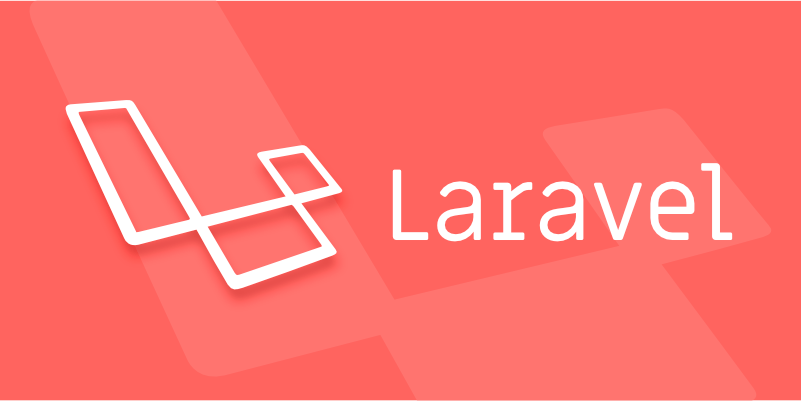Building dynamic interfaces with Laravel Livewire
Jul 02, 2025 pm 03:32 PMLaravel Livewire is an effective tool for building dynamic interfaces. The installation steps are: 1. Install through Composer; 2. Introduce scripts in layout files; 3. Publish config files if configuration is required; 4. Use the Artisan command to generate components. Components are composed of classes and views. The classes process data logic and the views are responsible for rendering. For example, when creating a counter component, the class defines properties and methods, and the views bind interactive events through instructions. Complex interfaces can be implemented through the collaboration of multiple components and communicate using event mechanisms. Overcomponentization should be avoided when using Livewire to reduce performance overhead. Optimization suggestions include: lazy loading of input boxes, cache calculated values, searching for input anti-shake, using them in combination with Alpine.js, and optimizing resource loading in production environments to improve performance and maintainability.

When it comes to building dynamic interfaces in Laravel, Livewire is a solid choice. It lets you create reactive components without leaving the comfort of Laravel's ecosystem. You don't need to write complex JavaScript—just PHP and Blade templates.

Setting Up Livewire
To start using Livewire, you first need to install it via Composer:

composer requires livewire/livewire
Then include the Livewire scripts in your main layout file:
@livewireStyles @livewireScripts
It's also important to publish the config file if needed:

php artisan vendor:publish --tag=livewire-config
This gives you control over things like asset URL handling and middleware settings. Once installed, you can start generating components using Artisan:
php artisan make:livewire Counter
This creates both a PHP class and a Blade view, ready for you to customize.
Creating Interactive Components
A Livewire component usually has two parts: the class and the view. The class holds your data and logic, while the view renders it.
For example, here's a basic counter component:
class Counter extends Component
{
public $count = 0;
public function increment()
{
$this->count ;
}
public function render()
{
return view('livewire.counter');
}
}And in the Blade template:
<div>
<button wire:click="increment"> </button>
<span>{{ $count }}</span>
</div> Clicking the button updates $count without a full page reload. That's Livewire syncing the state behind the scenes.
You can do more than just increment numbers—Livewire supports form inputs, validation, lifecycle hooks, and even file uploads. Just remember: any change to a public property triggers an update.
Handling Complex UIs with Multiple Components
When your interface grows, splitting logic into multiple components make things easier to manage. For instance, you might have a parent component that includes several smaller ones:
<livewire:top-nav /> <livewire:sidebar /> <livewire:main-content />
Each of these components can handle their own state independently. If you need communication between them, Livewire offers events:
// In one component
$this->emit('itemSelected', $itemId);
// In another component
protected $listeners = ['itemSelected'];
public function itemSelected($itemId)
{
$this->selectedItem = Item::find($itemId);
}This keeps things decoupled but still connected when needed.
One thing to watch out for: avoid making everything a Livewire component. Use it where interactivity adds real value, not just for static content. Otherwise, you'll end up with unnecessary overhead.
Performance Tips and Best Practices
Livewire works by sending small AJAX requests on every action. While it's efficient by default, there are ways to keep it snappy:
- Use lazy loading for inputs : Add
wire:model.lazyto reduce the number of updates. - Avoid rendering large lists dynamically : Livewire sends the entire component HTML back each time, so big datasets can get heavy.
- Cache computed values ??: If a value takes time to compute, store it temporarily instead of reccalculating on every render.
- Use debounce for search inputs : Like
wire:model.debounce.500ms="search"to prevent too many rapid calls.
Also, Livewire plays nicely with Alpine.js. So if you need some lightweight client-side behavior, you can mix them without conflict.
If you're deploying to production, make sure to optimize assets:
php artisan livewire:publish --config
This ensures Livewire loads from a CDN or your own asset pipeline, not the package folder.
That's the core of working with Livewire. It's powerful but simple enough to drop into existing apps. The key is knowing when to use it and how to structure your components for maintainability.
The above is the detailed content of Building dynamic interfaces with Laravel Livewire. For more information, please follow other related articles on the PHP Chinese website!

Hot AI Tools

Undress AI Tool
Undress images for free

Undresser.AI Undress
AI-powered app for creating realistic nude photos

AI Clothes Remover
Online AI tool for removing clothes from photos.

Clothoff.io
AI clothes remover

Video Face Swap
Swap faces in any video effortlessly with our completely free AI face swap tool!

Hot Article

Hot Tools

Notepad++7.3.1
Easy-to-use and free code editor

SublimeText3 Chinese version
Chinese version, very easy to use

Zend Studio 13.0.1
Powerful PHP integrated development environment

Dreamweaver CS6
Visual web development tools

SublimeText3 Mac version
God-level code editing software (SublimeText3)
 Working with pivot tables in Laravel Many-to-Many relationships
Jul 07, 2025 am 01:06 AM
Working with pivot tables in Laravel Many-to-Many relationships
Jul 07, 2025 am 01:06 AM
ToworkeffectivelywithpivottablesinLaravel,firstaccesspivotdatausingwithPivot()orwithTimestamps(),thenupdateentrieswithupdateExistingPivot(),managerelationshipsviadetach()andsync(),andusecustompivotmodelswhenneeded.1.UsewithPivot()toincludespecificcol
 Sending different types of notifications with Laravel
Jul 06, 2025 am 12:52 AM
Sending different types of notifications with Laravel
Jul 06, 2025 am 12:52 AM
Laravelprovidesacleanandflexiblewaytosendnotificationsviamultiplechannelslikeemail,SMS,in-appalerts,andpushnotifications.Youdefinenotificationchannelsinthevia()methodofanotificationclass,andimplementspecificmethodsliketoMail(),toDatabase(),ortoVonage
 Understanding Dependency Injection in Laravel?
Jul 05, 2025 am 02:01 AM
Understanding Dependency Injection in Laravel?
Jul 05, 2025 am 02:01 AM
Dependency injection automatically handles class dependencies through service containers in Laravel without manual new objects. Its core is constructor injection and method injection, such as automatically passing in the Request instance in the controller. Laravel parses dependencies through type prompts and recursively creates the required objects. The binding interface and implementation can be used by the service provider to use the bind method, or singleton to bind a singleton. When using it, you need to ensure type prompts, avoid constructor complications, use context bindings with caution, and understand automatic parsing rules. Mastering these can improve code flexibility and maintenance.
 Strategies for optimizing Laravel application performance
Jul 09, 2025 am 03:00 AM
Strategies for optimizing Laravel application performance
Jul 09, 2025 am 03:00 AM
Laravel performance optimization can improve application efficiency through four core directions. 1. Use the cache mechanism to reduce duplicate queries, store infrequently changing data through Cache::remember() and other methods to reduce database access frequency; 2. Optimize database from the model to query statements, avoid N 1 queries, specifying field queries, adding indexes, paging processing and reading and writing separation, and reduce bottlenecks; 3. Use time-consuming operations such as email sending and file exporting to queue asynchronous processing, use Supervisor to manage workers and set up retry mechanisms; 4. Use middleware and service providers reasonably to avoid complex logic and unnecessary initialization code, and delay loading of services to improve startup efficiency.
 Managing database state for testing in Laravel
Jul 13, 2025 am 03:08 AM
Managing database state for testing in Laravel
Jul 13, 2025 am 03:08 AM
Methods to manage database state in Laravel tests include using RefreshDatabase, selective seeding of data, careful use of transactions, and manual cleaning if necessary. 1. Use RefreshDatabasetrait to automatically migrate the database structure to ensure that each test is based on a clean database; 2. Use specific seeds to fill the necessary data and generate dynamic data in combination with the model factory; 3. Use DatabaseTransactionstrait to roll back the test changes, but pay attention to its limitations; 4. Manually truncate the table or reseed the database when it cannot be automatically cleaned. These methods are flexibly selected according to the type of test and environment to ensure the reliability and efficiency of the test.
 Choosing between Laravel Sanctum and Passport for API authentication
Jul 14, 2025 am 02:35 AM
Choosing between Laravel Sanctum and Passport for API authentication
Jul 14, 2025 am 02:35 AM
LaravelSanctum is suitable for simple, lightweight API certifications such as SPA or mobile applications, while Passport is suitable for scenarios where full OAuth2 functionality is required. 1. Sanctum provides token-based authentication, suitable for first-party clients; 2. Passport supports complex processes such as authorization codes and client credentials, suitable for third-party developers to access; 3. Sanctum installation and configuration are simpler and maintenance costs are low; 4. Passport functions are comprehensive but configuration is complex, suitable for platforms that require fine permission control. When selecting, you should determine whether the OAuth2 feature is required based on the project requirements.
 Implementing Database Transactions in Laravel?
Jul 08, 2025 am 01:02 AM
Implementing Database Transactions in Laravel?
Jul 08, 2025 am 01:02 AM
Laravel simplifies database transaction processing with built-in support. 1. Use the DB::transaction() method to automatically commit or rollback operations to ensure data integrity; 2. Support nested transactions and implement them through savepoints, but it is usually recommended to use a single transaction wrapper to avoid complexity; 3. Provide manual control methods such as beginTransaction(), commit() and rollBack(), suitable for scenarios that require more flexible processing; 4. Best practices include keeping transactions short, only using them when necessary, testing failures, and recording rollback information. Rationally choosing transaction management methods can help improve application reliability and performance.
 Handling HTTP Requests and Responses in Laravel.
Jul 16, 2025 am 03:21 AM
Handling HTTP Requests and Responses in Laravel.
Jul 16, 2025 am 03:21 AM
The core of handling HTTP requests and responses in Laravel is to master the acquisition of request data, response return and file upload. 1. When receiving request data, you can inject the Request instance through type prompts and use input() or magic methods to obtain fields, and combine validate() or form request classes for verification; 2. Return response supports strings, views, JSON, responses with status codes and headers and redirect operations; 3. When processing file uploads, you need to use the file() method and store() to store files. Before uploading, you should verify the file type and size, and the storage path can be saved to the database.






